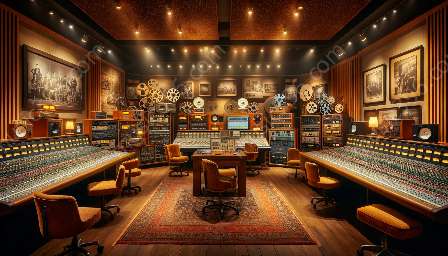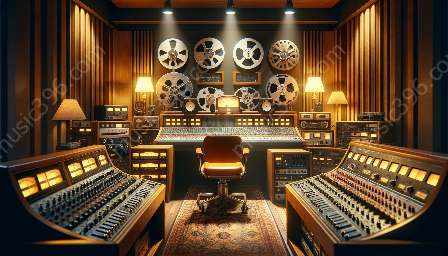Recording engineers play a critical role in the music industry, using their technical expertise and creative understanding to capture artists' performances and translate them into high-quality recordings. One of the key challenges recording engineers face is the need to adapt to the specific requirements of different music genres. Each genre, whether it's rock, jazz, hip-hop, or classical, comes with its own set of sonic characteristics, production techniques, and aesthetic considerations. In this topic cluster, we'll explore how recording engineers navigate the diverse landscape of music genres, and the strategies and techniques they employ to meet the unique demands of each genre.
The Role of Recording Engineer
Before delving into the intricacies of adapting to different music genres, it's important to understand the fundamental role of a recording engineer. A recording engineer is responsible for capturing, mixing, and mastering audio recordings, ensuring that the final product reflects the artistic vision of the musicians and producers involved. They work closely with artists, producers, and other music industry professionals to achieve the desired sound and sonic quality.
Recording engineers are technical experts who possess a deep understanding of sound reinforcement, microphone placement, signal flow, and digital audio workstations (DAWs). They are also creatives who possess a keen ear for musical nuances and a deep appreciation for the art of recording. The combination of technical prowess and artistic sensibility enables recording engineers to adapt to the specific needs and preferences of different music genres.
Understanding the Unique Requirements of Different Genres
Every music genre has its own sonic identity and production values. For example, rock music often emphasizes powerful, distorted guitar tones and energetic drum performances, while jazz music places a premium on spacious, natural room ambience and the nuances of acoustic instruments. Hip-hop, on the other hand, prioritizes tight, punchy drum sounds and bold, impactful bass lines, and classical music demands pristine, transparent recording techniques that accurately capture intricate instrumental and orchestral performances.
As recording engineers approach each genre, they must familiarize themselves with its sonic characteristics, arrangements, and production conventions. This involves studying the work of established artists within the genre, understanding the historical development of the style, and identifying the sonic benchmarks that define the genre's sound. By immersing themselves in the culture and aesthetics of different genres, recording engineers are better equipped to adapt their recording techniques and creative decisions to align with the specific requirements of each genre.
Strategies for Adapting to Different Genres
Adapting to the specific requirements of different music genres requires recording engineers to employ a range of strategies and techniques. These may include:
- Customized Signal Chain: Crafting a signal chain tailored to the sonic characteristics of the genre. For example, using different microphones and preamps to capture the warm, vintage tones of a jazz ensemble or opting for dynamic microphone placements to achieve the aggressive sound of heavy metal.
- Room Acoustics: Understanding the impact of room acoustics on different genres and making informed decisions about recording spaces to achieve the desired sonic qualities. This may involve choosing between a live room for a lively, energetic feel or a dead room for a tighter, more controlled sound.
- Microphone Techniques: Employing specialized microphone techniques to capture the unique traits of various instruments and vocal styles. This could involve close-miking techniques for rock and pop vocals, or utilizing room miking for ambient recording in orchestral or choral settings.
- Mixing and Processing: Tailoring mixing and signal processing approaches to suit the demands of specific genres, such as sculpting punchy, impactful drum mixes for hip-hop or integrating natural reverbs and spatial effects for classical and acoustic recordings.
- Collaborative Communication: Engaging in open communication with artists, producers, and other stakeholders to understand their creative vision and align the recording process with the sonic identity of the genre.
By embracing these and other strategies, recording engineers can effectively adapt their approach to match the sonic, aesthetic, and creative requirements of diverse music genres.
Embracing Innovation and Technological Advancements
The field of music recording is constantly evolving, driven by advancements in technology, production techniques, and sonic aesthetics. As recording engineers adapt to the specific requirements of different music genres, they must also embrace innovation and remain abreast of the latest developments in audio technology.
From the emergence of new recording tools and plugins to the evolution of mixing and mastering practices, recording engineers must continuously update their skill sets and explore innovative methods to cater to the needs of various genres. Whether it's adopting new recording methodologies for electronic music production or integrating cutting-edge spatial audio techniques for immersive soundscapes, staying at the forefront of technological innovation allows recording engineers to expand their creative palette and meet the evolving demands of diverse music genres.
Conclusion
Adapting to the specific requirements of different music genres is a multifaceted endeavor that requires recording engineers to blend technical expertise with artistic intuition. By understanding the sonic nuances and production characteristics of diverse genres, employing genre-specific recording techniques, and embracing technological advancements, recording engineers can successfully navigate the rich tapestry of musical styles and contribute to the vibrant diversity of the music recording industry.



































